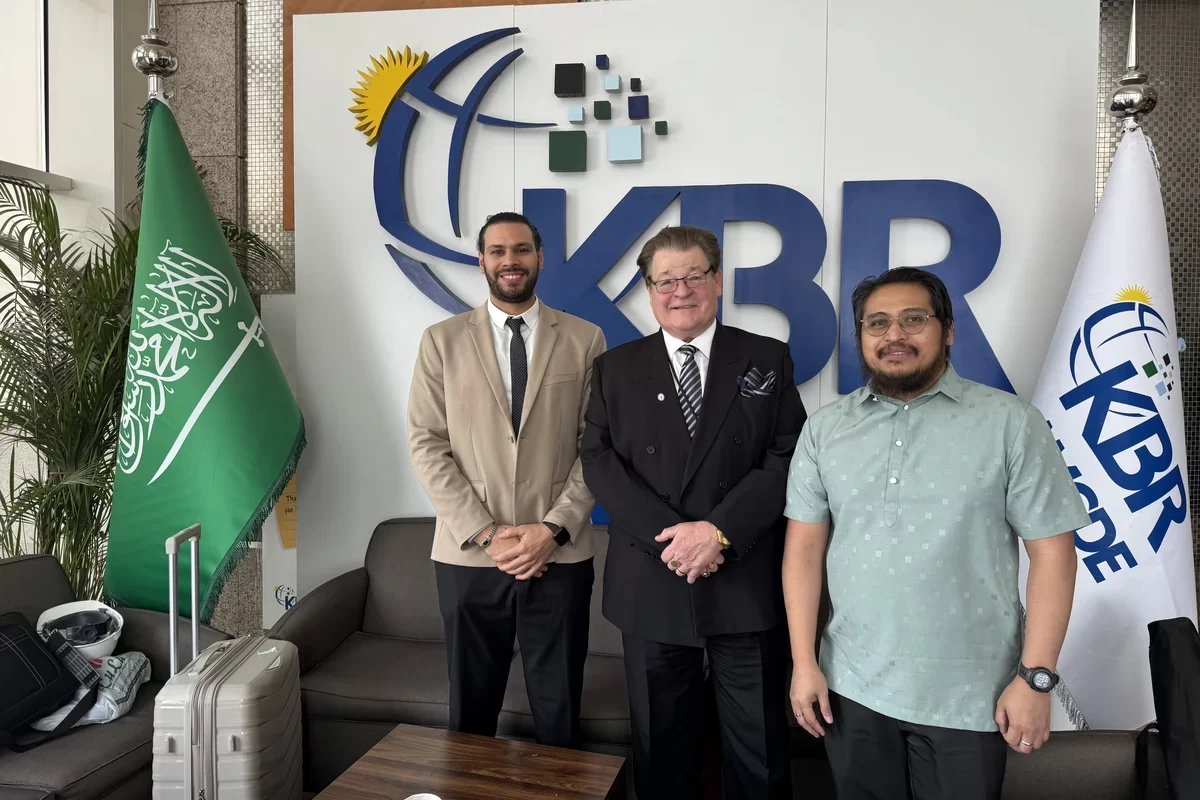
Going Beyond Compliance: A Strategic Roadmap for Legacy Waste Assessment and Remediation in Saudi Arabia
In today’s post, we’ll cover:
- The Financial Urgency: Understand the new MEWA and RCER-2025 Volumes 1,2 & 3 regulations, with penalties for soil and groundwater contamination reaching up to SAR 10 million.
- The Technical Process: Learn our proven four-phase approach to systematically assess, manage, and remediate contaminated sites, turning liability into a manageable successful project.
- The Strategic Vision: Identify how proactive environmental remediation aligns with Saudi Vision 2030 and the Saudi Green Initiative, positioning your organisation as a leader in the Kingdom’s bid for a sustainable future.
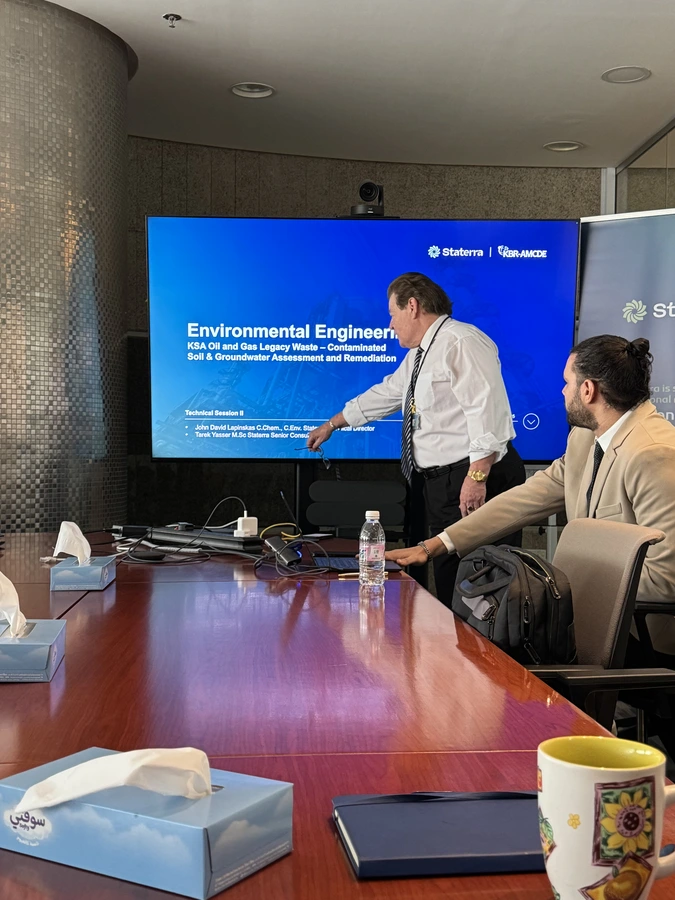
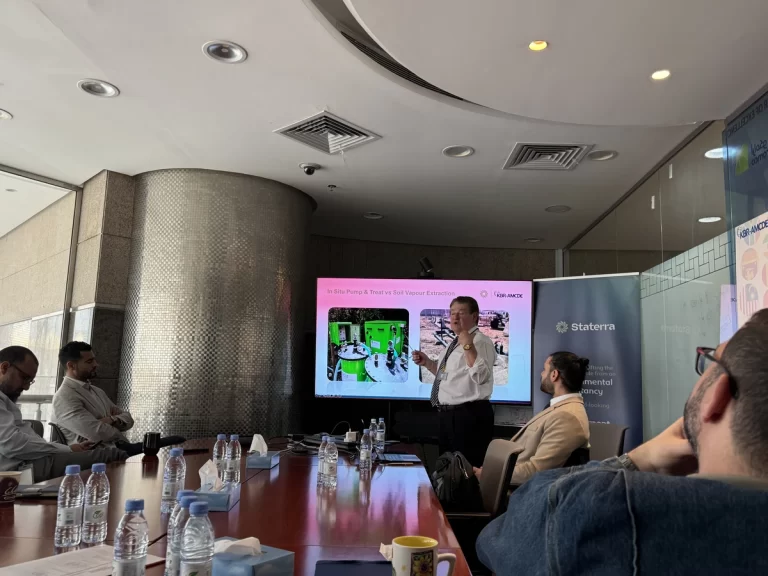
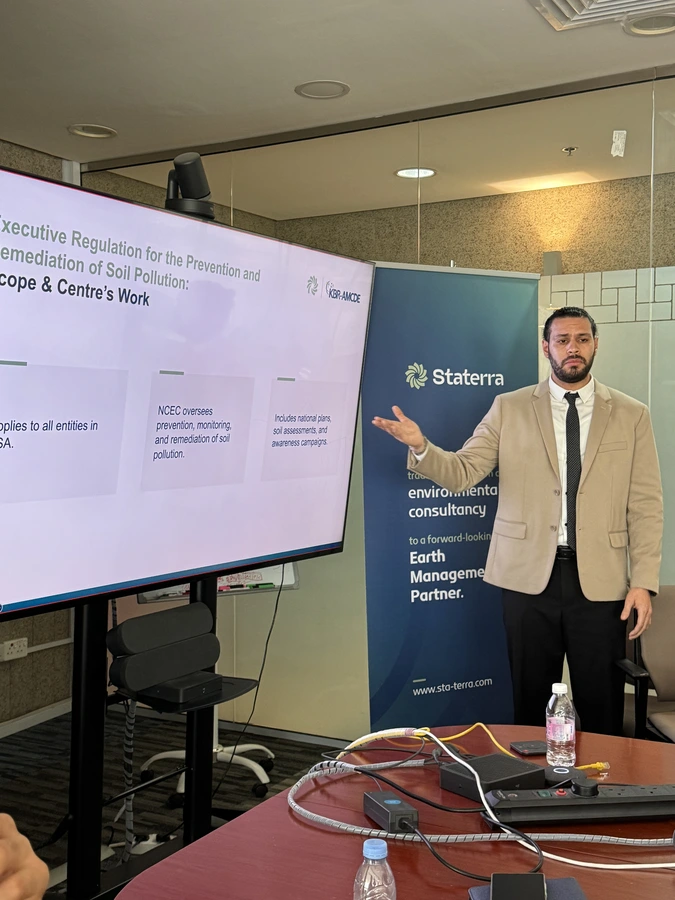
The key takeaway was clear: for blue-chip oil and gas players and their partners, the time to act is now.
The era of passive monitoring (in hopes of natural attenuation) has been replaced by a new paradigm shift towards proactive remediation, driven by stringent KSA and International guidelines and regulations with a Saudi national commitment towards longer term sustainability according to United Nations Guidelines.
The Urgency: A New Era of Regulatory Enforcement
The message from Saudi Arabia’s regulators is unequivocal ‘forewarned is forearmed’. As we’ve detailed in our series on environmental compliance in KSA, the Ministry of Environment, Water, and Agriculture (MEWA) and the National Center for Environmental Compliance (NCEC) and the Royal Commission for Jubail, Yanbu, Al Khair and Jizan have established robust frameworks that shift the burden of proof, and the cost of remediation, squarely onto the polluter in the internationally accepted concept of ‘cradle to grave’ responsibility applicable to poor environmental practices dating back over half a century ago.
This is reinforced and underpinned by the Royal Commission Environmental Regulations 2025 (RCER-2025), which introduces a strict, six-tier violation system. Key financial and operational risks include:
- Substantial Fines: penalties for soil contamination can reach up to SAR 10 million, with similar fines for groundwater pollution.
- Escalating Penalties: the system includes multipliers for repeat violations, meaning the cost of non-compliance grows exponentially over time.
- Operational Risk: severe or repeated offences can lead to the revocation of a facility’s Environmental Permit to Operate, halting business entirely.
Critically, the regulations now mandate that oil and gas crude oil abstraction (both offshore and onshore) and processing companies must not only remediate new incidents but also address historical contamination from past decades of poor environmental practice. Ignoring this is no longer a viable strategy.
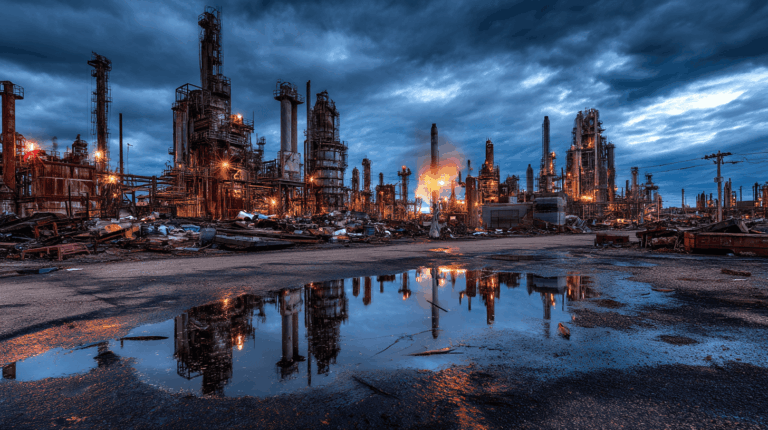
The Process: A Phased Approach to a Complex Problem
Acknowledging the problem is the first and most crucial step. The path from a contaminated site to compliant asset does not have to be overwhelming. At Staterra, we guide our clients through a methodical, four-phase process designed to manage risk, control costs, and ensure regulatory alignment:
- Phase I – Assessment & Desk Study: we begin by identifying potential risks through a comprehensive review of historical site data and a physical site walkover. As we explain in our guide to the Phase I Desk Top Study, this allows us to develop a preliminary conceptual model of contamination without intrusive work.
- Phase II – Intrusive Investigation: based on Phase I findings, we conduct targeted soil and groundwater sampling. This provides the critical data needed to define the extent of contamination and establish risk-based cleanup targets.
- Phase III – Remediation: with a clear understanding of the site, we design and implement the most appropriate remediation strategy. This can include a range of technologies from in-situ bioremediation and soil vapour extraction to ex-situ soil washing and chemical fixation.
- Phase IV – Verification: upon completion of the cleanup, we produce a comprehensive verification report, providing regulators with the definitive evidence that the site meets all agreed-upon standards and is safe for its intended use.
This structured process, a core part of our environmental engineering services, ensures that investment is targeted and every action is defensible, putting our clients in control of the conversation with regulators.
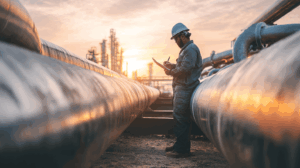
The Vision: From Remediation to Reputational Leadership
Addressing legacy waste is more than a regulatory obligation; it is a strategic imperative. Proactive environmental stewardship directly supports the ambitious goals of the Saudi Green Initiative and Vision 2030. By voluntarily assessing and remediating contaminated sites, companies demonstrate a tangible commitment to the Kingdom’s sustainable future.
This leadership delivers powerful business benefits:
- Enhanced Reputation: It builds trust with stakeholders, from government bodies to local communities and investors.
- Future-Proofing Operations: It mitigates the risk of future liabilities where remedial costs for both CAPEX and OPEX will no doubt be much higher than present day) and ensures a stable, long-term license to operate.
- Competitive Advantage: It positions a company as a responsible partner of choice for major projects and joint ventures within the Kingdom.
This mindset is the essence of our philosophy of going ‘Going Beyond Compliance’, turning regulatory hurdles into strategic advantages.
Conclusion: The Way Forward
The message from our session is clear, namely, the risk of inaction on legacy waste has never been higher, but the pathway to compliance has never been clearer. By embracing a proactive stance, companies can move from a defensive position to one of leadership, turning a historical liability into a powerful statement of their commitment to Saudi Arabia’s future.
We extend our sincere appreciation to our friends and partners at KBR-AMCDE for facilitating this vital conversation. KBR’s dedication to delivering innovative, high-quality engineering solutions and their deeply held values of integrity and teamwork make them an invaluable ally in this mission. Together, we can guide the industry toward a future where environmental excellence and economic progress go hand in hand.
For a confidential consultation on your facility’s environmental compliance status or legacy waste challenges, contact Staterra’s technical team today.
Stay tuned: In the upcoming month of October 2025, Staterra will be hosting a dedicated webinar on the critical topic of oil and gas legacy waste in Saudi Arabia. We invite all industry partners and stakeholders to look forward to this session, details and registration information will be announced soon.
